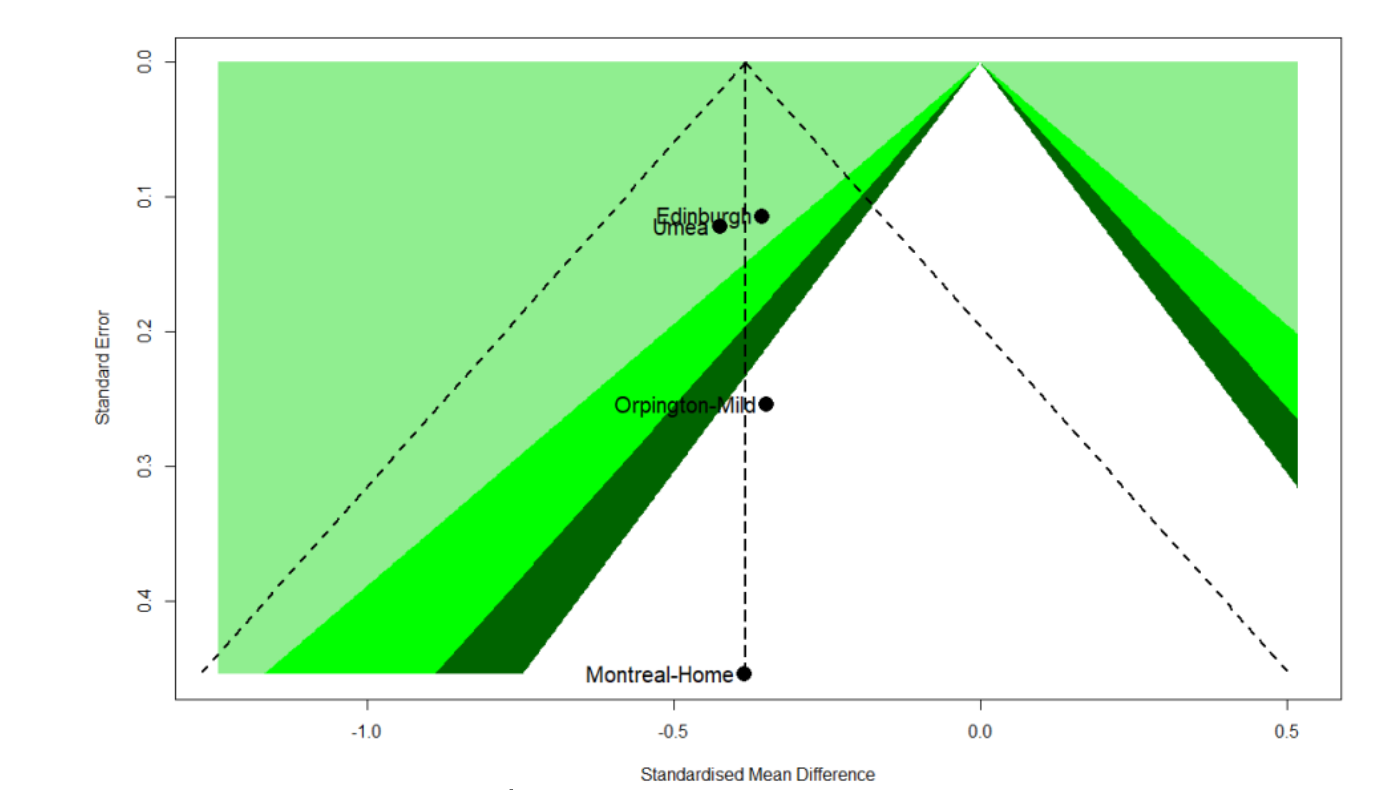การใช้โปรแกรม R ในการวิเคราะห์อภิมานเพื่อการวิจัย: บริบทวิทยาศาสตร์สุขภาพ
Main Article Content
บทคัดย่อ
มีการตีพิมพ์โดยใช้การวิเคราะห์อภิมานเป็นส่วนหนึ่งของการตีพิมพ์เพิ่มขึ้นเรื่อย ๆ แต่นักวิชาการไทยและนักวิจัยไทยยังมีการการใช้โปรแกรม R ในการวิเคราะห์อภิมานน้อยมากในบริบทการวิจัยด้านวิทยาศาสตร์สุขภาพ รวมถึงการสอนการใช้โปรแกรม R ในการวิเคราะห์สถิติเพื่อการวิจัย ดังนั้น บทความวิจัยนี้มีวัตถุประสงค์คือ 1. เพื่อสังเคราะห์เอกสารสำหรับการวิเคราะห์อภิมานด้วยโปรแกรม R ขั้นพื้นฐาน และ 2) เพื่อเสนอแนะแนวทางให้ผู้วิจัยได้ศึกษาวิธีการวิเคราะห์สถิติเพื่อการวิจัยเพิ่มเติมที่สูงกว่าการวิเคราะห์อภิมานขั้นพื้นฐาน
ผลการวิจัย พบว่า 1. โปรแกรม R สามารถวิเคราะห์อภิมานขั้นพื้นฐานได้ไม่ด้อยไปกว่าโปรแกรมทางสถิติอื่น ๆ ดังนั้น บทความนี้จึงแบ่งการนำเสนอการการวิเคราะห์อภิมานขั้นพื้นฐานเป็น 2 ส่วน ส่วนที่หนึ่งได้มีการแนะนำแนวคิดการทบทวนวรรณกรรมอย่างเป็นระบบ (Systematic Review) ซึ่งประกอบด้วย 2 ส่วนย่อย ส่วนย่อยที่ 1) กล่าวถึงการประยุกต์ใช้ PICO สำหรับกำหนดคำถามการวิจัยให้ชัดเจนเพื่อเป็นฐานในการคัดเข้าวรรณกรรมเพื่อการวิเคราะห์อภิมานต่อไป และส่วนย่อยที่ 2) เป็นการประยุกต์ใช้ PRISMA เพื่ออธิบายการคัดเข้าและคัดออกการศึกษาที่จะนำไปวิเคราะห์อภิมาน ในส่วนที่ย่อยที่สองได้มีการแนะนำการวิเคราะห์อภิมานด้วยโปรแกรม R ในหัวข้อที่เกี่ยวข้องตามหลักสากล เริ่มตั้งแต่การนำเข้าชุดข้อมูลเพื่อการวิเคราะห์อภิมาน การวิเคราะห์อภิมานจะแสดงผลการวิเคราะห์ในรูปแบบของตัวหนังสือ การวิเคราะห์สถิติย่อยต่าง ๆ ที่สำคัญที่ต้องใช้ในการรายงานผลการวิจัย เช่น ขนาดอิทธิพลรวมในรูปแบบของ Common (Fixed) effect และ Random effect รวมถึงการวิเคราะห์ Test of heterogeneity นอกจากนั้นยังมีการวิเคราะห์ที่เป็นภาพ Forest plot และ Funnel plot ที่เกี่ยวข้องกับการวิเคราะห์ Publication bias
2. แนวทางให้ผู้วิจัยได้ศึกษาเพิ่มเติมที่สูงกว่าการวิเคราะห์อภิมานขั้นพื้นฐาน คือ สามารถใช้โปรแกรม R เพื่อมุ่งเน้นให้วิเคราะห์อภิมานได้ครบคลุมและมีมาตรฐานสูง ทั้งนี้ โปรแกรม R มีความสามารถหลายประการที่อาจสูงกว่าโปรแกรมทางสถิติอื่น ๆ ด้วยเหตุนี้ นักวิชาการไทยและนักวิจัยไทยสามารถใช้โปรแกรม R ในการวิเคราะห์อภิมาน และสามารถตีพิมพ์ในวารสารระดับชั้นนำของโลกได้ไม่ต่างจากนักวิจัยในระดับนานาชาติที่ได้นำโปรแกรม R มาใช้ในการวิเคราะห์อภิมานในบริบทของวิทยาศาสตร์สุขภาพและตีพิมพ์ในวารสารระดับโลก
Article Details

This work is licensed under a Creative Commons Attribution-NonCommercial-NoDerivatives 4.0 International License.
ผู้แต่งจะต้องกรอกข้อมูลเพื่อโอนลิขสิทธิ์ (copyright) ให้กับวารสารวิทยาการสารสนเทศและเทคโนโลยีประยุกต์ ก่อนเผยแพร่บทความ โดยดูรายละเอียดเพิ่มเติมได้ที่ https://ph01.tci-thaijo.org/index.php/jait/copyrightlicense
References
Balduzzi, S., Rücker, G., & Schwarzer, G. (2019). How to perform a meta-analysis with R: A practical tutorial. Evidence-Based Mental
Health. 22(4), 153-160. https://mentalhealth.bmj.com/content/22/4/153
Barker, T. H., Migliavaca, C. B., Stein, C., Colpani, V., Falavigna, M., Aromataris, E., & Munn, Z. (2021). Conducting proportional meta-analysis in different types of systematic reviews: A guide for synthesisers of evidence. BMC Medical Research Methodology. 21(1), 189. https://doi.org/10.1186/s12874-021-01381-z
Cajal, B., Jiménez, R., Gervilla, E., & Montaño, J. J. (2020). Doing a systematic review in health sciences. Clínica Y Salud. 31(2), 77–83. https://doi.org/10.5093/clysa2020a15
Chananet, C. (2010). Using R program for meta-analysis. The Journal of Applied Science. 9(1), 28-38. https://www.journal.sci.kmutnb.ac.th/journal_files/3_1_2553.pdf. [In Thai]
Cumpston, M. S., McKenzie, J. E., Thomas, J., & Brennan, S. E. (2021). The use of ‘PICO for synthesis’ and methods for synthesis without meta-analysis: Protocol for a survey of current practice in systematic reviews of health interventions. F1000Research. 9, 678. https://doi.org/10.12688/f1000research.24469.2
Dechpichai, P., Kongchareon, J., Suwanateep, N., Tuprakay, S. R., & Pongsopa, J. (2017). The pooled prevalence of allergic disease in Thai children: Meta-analysis. Advances Science. 17(2), 78-98. https://sci.bsru.ac.th/sciweb/e-magazine/17-2/chapter-7.pdf. [In Thai]
Durand, M.-A., Carpenter, L., Dolan, H., Bravo, P., Mann, M., Bunn, F., & Elwyn, G. (2014). Do interventions designed to support shared decision-making reduce health inequalities? A systematic review and meta-analysis. PLOS ONE. 9(4), e94670. https://doi.org/10.1371/journal.pone.0094670
Egger, M., Higgins, J. P. T., & Smith, G. D. (2022). Systematic Reviews in Health Research: Meta‐Analysis in Context. London : BMJ Book.
Gogtay, N. J. & Thatte, U. M. (2017). An introduction to meta-analysis. Journal of the Association of Physicians of India. 65, 78-85. https://www.japi.org/x2e464/an-introduction-to-meta-analysis
Harrer, M., Cuijpers, P., Furukawa, T.A., & Ebert, D.D. (2021). Doing meta-analysis with R: A hands-on guide. London : Chapman & Hall/CRC Press.
Hsu, C.-Y. & Lin, Y.-N. (2019). Meta-analyzability concerns in meta-analyses. Archives of Physical Medicine and Rehabilitation. 100(8), 1574–1577. https://doi.org/10.1016/j.apmr.2019.01.002
Linden, A. H., & Hönekopp, J. (2021). Heterogeneity of research results: A new perspective from which to assess and promote progress in psychological science. Perspectives on Psychological Science. 16(2), 358–376. https://doi.org/10.1177/1745691620964193
Littell, J. H., Corcoran, J., & Pillai, V. (2008). Systematic reviews and meta-analysis. USA : Oxford University Press.
McGuinness, L. A. (2019). robvis: An R package and web application for visualising risk-of-bias assessments. Retrieved 10 June 2023. Retrieved from https://github.com/mcguinlu/robvis.
Migliavaca, C. B., Stein, C., Colpani, V., Barker, T. H., Ziegelmann, P. K., Munn, Z., & Falavigna, M. (2022). Meta‐analysis of prevalence: I2 statistic and how to deal with heterogeneity. Research Synthesis Methods. 13(3), 363–367. https://doi.org/10.1002/jrsm.1547
O’rourke, K. (2007). An historical perspective on meta-analysis: Dealing quantitatively with varying study results. Journal of the Royal Society of Medicine. 100(12), 579–582. https://doi.org/10.1177/0141076807100012020
Page, M. J., et al. (2021). The PRISMA 2020 statement: An updated guideline for reporting systematic reviews. PLOS Medicine. 18(3), Article e1003583. https://doi.org/10.1371/journal.pmed.1003583
Spineli, L. M. & Pandis, N. (2020). Fixed-effect versus random-effects model in meta-regression analysis. Statistics and Research Design. 158(5), 770–772. https://doi.org/10.1016/j.ajodo.2020.07.016
Wickham, H & Bryan, J. (2023). Readxl: Read Excel Files. Retrieved 8 June 2023. Retrieved from https://readxl.tidyverse.org.





